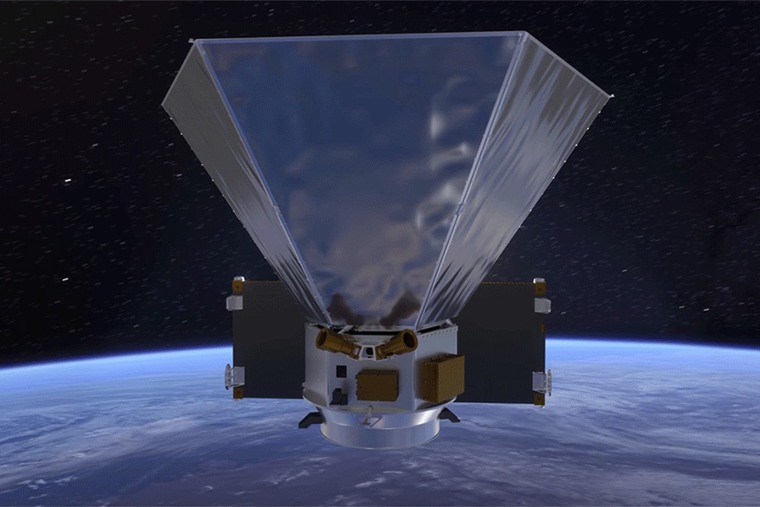
NASA’s latest space observatory is set to launch into orbit this Thursday, embarking on an ambitious quest to map over 450 million galaxies.
The SPHEREx mission, short for Spectro-Photometer for the History of the Universe, Epoch of Reionization and Ices Explorer, aims to survey the entire night sky four times over a span of two years. This groundbreaking endeavor will provide researchers with invaluable insights into the formation and evolution of galaxies while shedding light on the origins of the universe itself.
“This mission will address a key question: How did we arrive here?” remarked Shawn Domagal-Goldman, acting director of NASA’s astrophysics division, during a recent press briefing.
The SPHEREx observatory is slated to launch Thursday at or after 10:09 p.m. ET from Vandenberg Space Force Base in California.
This cone-shaped spacecraft will launch alongside four suitcase-sized satellites, which NASA will deploy simultaneously on a separate mission focused on solar studies, all aboard a SpaceX Falcon 9 rocket.

NASA / JPL-Caltech
With a budget of $488 million and a decade in the making, the SPHEREx mission is engineered to capture the celestial landscape in 102 infrared colors—the broadest spectrum attempted by any prior mission, according to NASA.
Infrared technology is pivotal for bypassing dust and gas, allowing astronomers to observe some of the universe’s oldest stars and galaxies, which would otherwise remain hidden. (It’s important to note that infrared wavelengths are not visible to the human eye due to their longer lengths, unlike visible light.)
By employing a method known as spectroscopy, scientists can analyze the infrared light emitted by celestial bodies, separating it into distinct colors much like sunlight dispersing through a prism. This enables researchers to gather vital information about an object’s composition, density, temperature, and motion.
The SPHEREx observatory will utilize its spectrometers to conduct a three-dimensional survey of the sky, measuring these characteristics across hundreds of millions of galaxies, explained Jamie Bock, principal investigator of the SPHEREx mission and professor of physics at the California Institute of Technology.
Bock indicated that these findings could provide insights into galaxy formation and allow scientists to explore the origins of water and other organic materials in our own Milky Way galaxy.
“By analyzing the light, we can determine the distances to galaxies, contributing to our three-dimensional mapping while also detecting the signatures of water,” Bock explained.
Understanding the origins of water could not only enhance our knowledge of the evolution of life on Earth but may also provide leads on where essential components for life might exist elsewhere in the galaxy.
“This represents a new capability, and with any new technology comes exciting opportunities for discoveries and unexpected findings,” Bock stated.
In mapping the sky, the SPHEREx mission will also explore one of astronomy’s greatest enigmas: the events that transpired during the initial moments after the Big Bang, which occurred around 13.8 billion years ago.
One prevailing theory, formulated in the late 1970s and early 1980s, posits that the universe experienced an extraordinary trillion-trillion-fold expansion within mere fractions of a second following the Big Bang—an occurrence known as cosmic inflation. This theory has been pivotal in explaining the universe’s flat geometry and lack of curvature as a potential cause for the formation of the universe’s largest structures, including galaxies and their clusters.
Despite this, astronomers have long grappled with understanding the mechanisms behind cosmic inflation. The SPHEREx mission could test these models in novel ways, as mapping the exact distribution of hundreds of millions of galaxies may help scientists delve deeper into the physics driving cosmic inflation and how such an immense expansion might have taken place.
“SPHEREx will evaluate specific inflation models by mapping hundreds of millions of galaxies in three dimensions across the entire sky,” Bock noted.
Domagal-Goldman expressed that the findings from the SPHEREx mission regarding galaxies, cosmic inflation, and the universe’s beginnings will significantly enhance humanity’s understanding of fundamental physics.
“We are fortunate to exist during a time when we can effectively explore and address questions about the universe,” he remarked.









